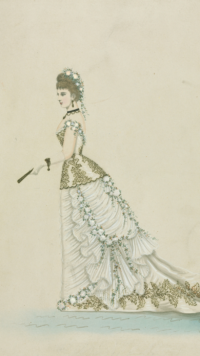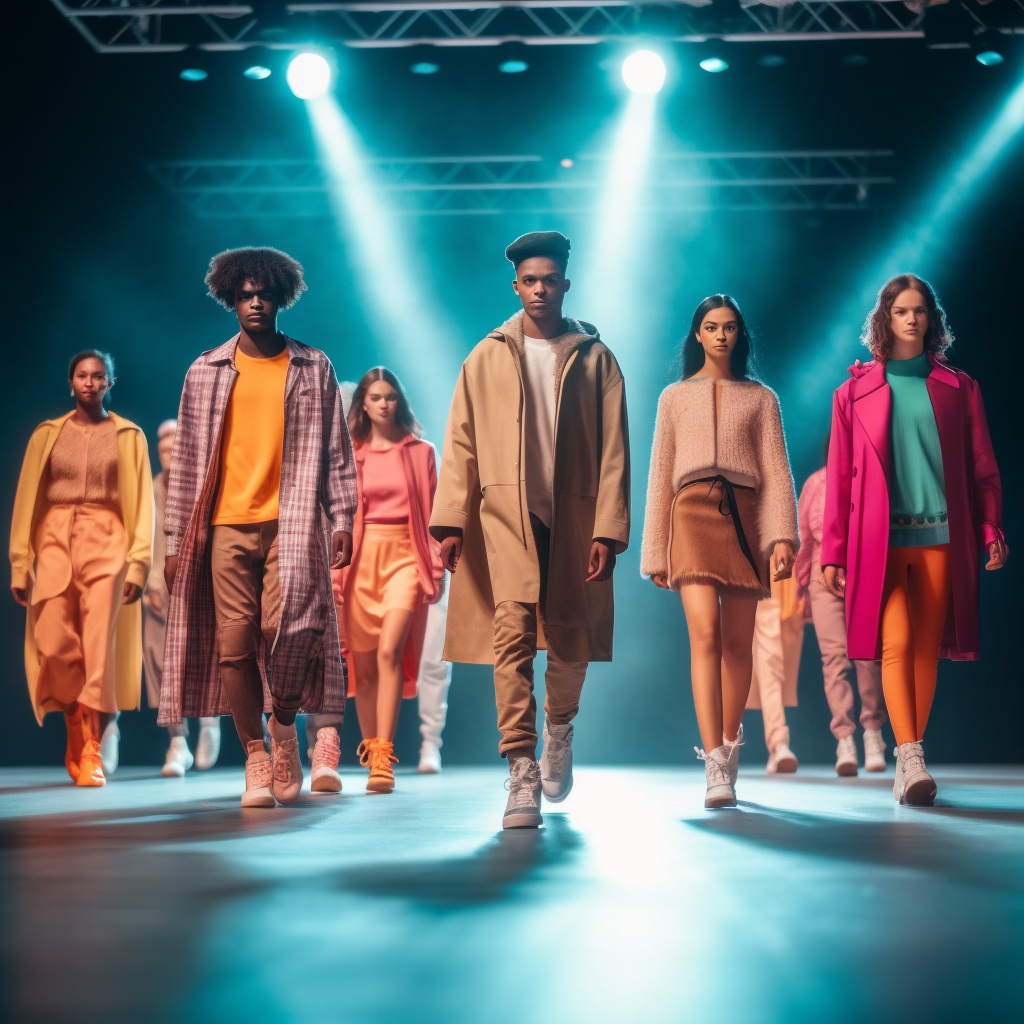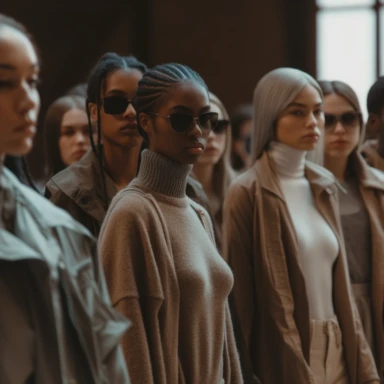Fashion to figure in 2024 mirroring the spirit of its time. It’s a medium through which individuals can express their identity and personal style choices. Let’s embark on an enthralling journey through the annals of fashion.
Ancient Civilizations: Weaving the Tapestry of Style
In the ancient realm of Egypt, fashion transcended mere attire; it was a symphony of linen and wool, each garment a work of art. Adorned with painstakingly crafted embroidery and delicate beads, clothing became a canvas of aesthetic expression, deeply rooted in symbolism. The Egyptians understood the power of attire in conveying status and culture. Linen, derived from flax, was a staple fabric, chosen for its breathability and comfort in the warm climate. Clothing wasn’t solely utilitarian; it was an extension of one’s social standing and personal taste.
Greek and Roman Elegance: The Mastery of Drapery
The Greeks and Romans elevated fashion to a sublime art form. Silk, linen, and wool wove a tapestry of elegance in their attire. Their ingenious fusion of styles across different regions birthed the concept of regional trends, imprinting distinct identities on various cities and provinces. The Greeks favored draped garments, creating a seamless flow of fabric that accentuated the natural contours of the body. In contrast, the Romans were pioneers of tailoring, utilizing intricate techniques to create form-fitting attire. Both civilizations understood the transformative power of clothing, not only in aesthetics but also in societal representation.

Middle Ages: Pragmatism Takes the Reins
The Middle Ages marked a departure from ostentation, as functionality took precedence in attire. Clothing was designed with a focus on practicality rather than flamboyance. Yet, beneath this veneer of pragmatism, a subtle undercurrent of style pulsed, awaiting its renaissance. The garments of this era were characterized by their durability and versatility. The shift towards more subdued colors and simpler silhouettes reflected a society adapting to a changing landscape. Despite the utilitarian focus, medieval fashion retained an element of artistry, seen in the intricate embroidery and craftsmanship that adorned garments.

The Renaissance Resurgence: The Revival of Opulence
The Renaissance breathed life back into fashion, reigniting a passion for opulence and intricacy. Elaborate garments once again graced the streets, portraying a society unapologetically enamored with extravagance. This era celebrated the artistry of clothing as an expression of wealth and status. Sumptuous fabrics like velvet and brocade took center stage, adorned with elaborate patterns and embellishments. The silhouette evolved, with garments becoming more structured and tailored to enhance the natural form. Fashion became a language of its own, a reflection of the flourishing arts and culture of the time.
18th Century Extravaganza: Corsets, Hoops, and Wigs
The 18th century burst forth with audacious fashion choices. Corsets sculpted silhouettes, hoop skirts expanded with grandeur, and powdered wigs adorned heads. A riot of colors and patterns adorned the attire, reflecting a society unafraid of bold expression. This era witnessed a departure from the natural form, as garments exaggerated curves and proportions. The elaborate coiffures and wigs became architectural feats, often towering high above the head. The intricacies of fashion mirrored the complexity of societal norms and the desire for ostentation.
19th Century: Fashion for All
The 19th century witnessed a pivotal shift with the emergence of ready-to-wear clothing. This democratized fashion, making it accessible to the masses. The advent of department stores further accelerated this accessibility, forever changing the landscape of style consumption. This era saw the rise of fashion magazines and illustrated catalogs, disseminating trends to a wider audience. The Industrial Revolution played a pivotal role, allowing for mass production and a broader range of fabrics. Silhouettes evolved with changing social roles, reflecting the increasing mobility and activity of women in society.
20th Century: A Century of Style Revolutions
The 20th century witnessed seismic shifts in fashion. The 1920s roared with flapper exuberance, giving way to the glamour of the 1930s and the austerity of the 1940s. The 1950s embraced femininity, while the 1960s rebelled and experimented with bold, avant-garde styles. Each decade of this century left an indelible mark on fashion, reflecting the societal and cultural shifts of the time. The 1920s embraced a newfound sense of liberation, with dropped waists and shorter hemlines. The 1930s exuded Hollywood glamour, characterized by bias-cut gowns and tailored suits. The 1960s, in contrast, heralded a youth-driven revolution, with mini-skirts and psychedelic prints taking center stage.

21st Century: A Tapestry of Individuality
The 21st century heralds an era of unprecedented sartorial freedom. Boundaries blur as individuals are encouraged to blend styles, creating a vibrant mosaic of fashion. The rulebook of fashion is continually rewritten, as personal expression takes center stage. Technology and globalization have democratized fashion, allowing for greater access to diverse styles and influences. Street style and social media have become powerful catalysts for trends, as individuals share and influence fashion on a global scale. This century is characterized by a celebration of diversity, with fashion becoming a platform for self-expression and inclusivity.
Fashion to figure in 2024

Gazing into theFashion to figure in 2024’s future, we witness a landscape transformed by cutting-edge technologies. 3D printing and artificial intelligence stand poised to revolutionize the industry, offering bespoke, eco-conscious creations. The integration of technology into fashion allows for unprecedented customization and efficiency in production. Virtual reality and augmented reality are reshaping the way consumers experience and interact with fashion. Sustainability emerges as a dominant force, driven by a passionate consumer base demanding ethical, environmentally-friendly attire. Designers and brands are exploring innovative materials and production methods to reduce the environmental footprint of Fashion to figure in 2024.
Fashion to figure in 2024, the only constant is change. The industry remains a dynamic platform for self-expression and identity, poised on the cusp of new horizons. Fashion continues to be a powerful force, shaping and reflecting the values and aspirations of society.
Conclusion

Fashion to figure in 2024, a kaleidoscope of self-expression, transcends eras and cultures. From ancient craftsmanship to futuristic innovations, it leaves an indelible mark on society. As we navigate this continuum, one truth remains: fashion endures as a powerful conduit for personal narrative. It’s a language without words, a visual symphony of individuality. Each era, with its unique styles and trends, contributes to this rich tapestry of human expression. As we look to the future, the potential for innovation and sustainability in fashion promises an exciting evolution of this dynamic art form.





![[removal.ai]_41709505-b305-44fd-97ff-5c381de50796-soccer-review-hub-1](http://soccerreviewhub.com/wp-content/uploads/2023/09/removal.ai_41709505-b305-44fd-97ff-5c381de50796-soccer-review-hub-1-1-e1694514490671.png)